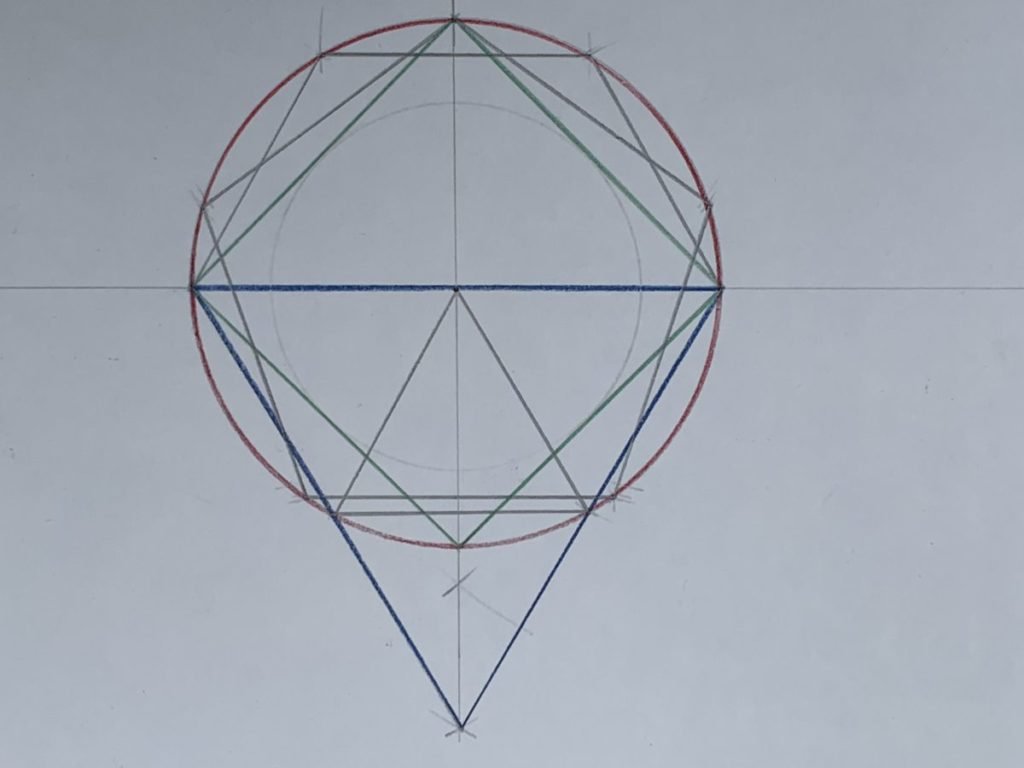
I have always thought that John Donne’s metaphor of the drawing compass in “Valediction: Forbidding Mourning” one of the most ingenious in English poetry. Not simply about two lovers parting, it describes a coming together through love. Another metaphor I greatly admire (along with everyone else) is the choice depicted in “The Road Not Taken” by Robert Frost. These two ideas in juxtaposition seem to conjure the structure of ‘theme and variation’ so elemental to art: the certainty of the circle with the uncertainty of lines pointing in different directions. Not exactly opposites, perhaps, but these ideas are dichotomies of answer to life’s BIG questions of suffering, purpose, and meaning.
These comparisons are without ambiguity. Yuval Noah Harari states “Humans think in stories rather than in facts, numbers, or equations and the simpler the story, the better.” * I subscribe to this statement, but I am plagued by the other side of the coin. Life is complex. To ricochet off a phrase from Thoreau, men lead lives of quiet distraction (as documented by numerous essays and books *). As a society we have lost our minds; our ‘values,’ our common decency, our sense of the common good, and so on. Is it possible to make sense of our snafu world? Can the why of religion or the how of science satisfy us? I have no idea how to answer these predicaments, except to be my own refuge (the idea in the Buddhist Mahāparinibbāna Sutta).
To throw out my own feeble explanation, life, and certainly art, is comprised of theme and variation. I am reminded that the origins of plane geometry, no doubt, began with a compass and a straight edge (maybe just a string and a peg.) By these two simple instruments, many (count them) figures can be drawn: concentric circles, different sized squares, right and equilateral triangles, trapezoids, a pentagon and decagon, a hexagon and dodecagon, octagon and hexadecagon and a rhombus. I find it fascinating that from circles (cycles) comes a profusion of shapes in a complexifying progression of lines. I think cartoon-like of a wheel rolling down a track; birthdays and anniversaries measuring the length of a lifetime.
I often advised my woodcarving students to understand the method of seeing the circles (inside joke as gouges are segments of circles) and not worrying about the end product as wood is cheap compared to the cost of labor, to understand the “method” of doing first things first, next things next, step by step, the ‘how-to’ of most craft books. In practice is the cyclical, but the learning is the linear. Most skills are accumulated or obtained in this way whether in meditation, playing piano, writing poetry or, indeed, making intellectual discoveries. I think of time in this way as well, memory being recycled, aspirations always anticipating. Against conventional wisdom, the rolling stone does gather moss.
Happy fifty-second, Liz, 31 January 2022.
Yuval Noah Harari, 21 Lessons for the 21st Century, p.3
Matthew B. Crawford, On Becoming an Individual in the Age of Distraction.

Share this post with your friends.

